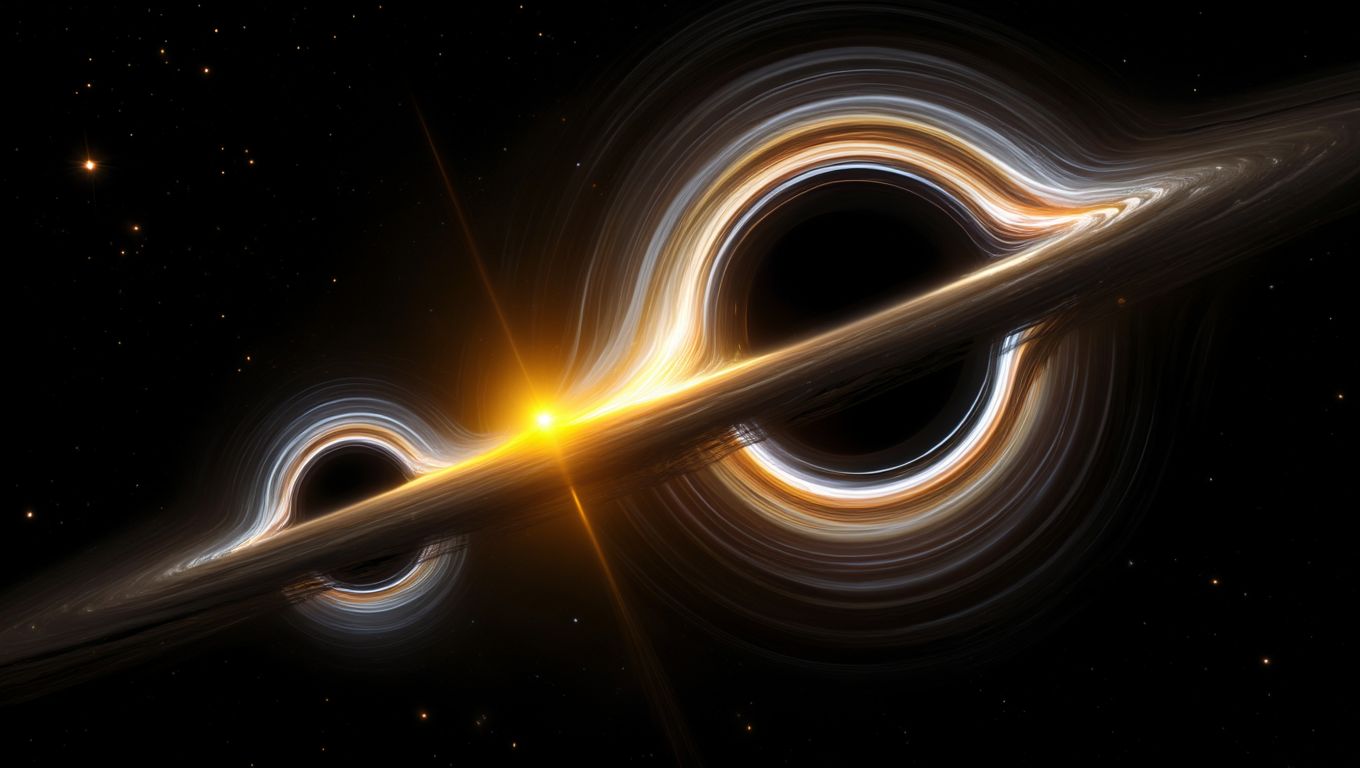Discovery of a "star crusher" in our galaxy 🌀
Published by Cédric,
Article author: Cédric DEPOND
Source: Astronomy & Astrophysics
Other Languages: FR, DE, ES, PT
Article author: Cédric DEPOND
Source: Astronomy & Astrophysics
Other Languages: FR, DE, ES, PT
Follow us on Google News (click on ☆)

This region, dominated by the supermassive black hole Sagittarius A* (Sgr A*), is the stage for extreme phenomena. Hidden by dust clouds, it only reveals its secrets through infrared and radio wave observations. New modeling published in Astronomy & Astrophysics suggests a "stellar grinding" scenario fueled by millions of black holes.
A violent galactic ecosystem
Sgr A*'s proximity creates unique conditions where gas and dust reach exceptional densities. This concentration enables rapid formation of massive O and B-type stars, true giants with tragic fates. Their short lifespans, under 5 million years for the most massive, fuel an infernal cycle of creation and destruction.
The model reveals each stellar generation leaves behind a cohort of stellar black holes. These gravitational remnants, accumulated over billions of years, would eventually dominate local dynamics. Their massive presence accelerates violent interactions, tearing apart surviving stars and releasing matter for new star formation cycles.
This cosmic "grinding machine" reaches formidable efficiency near the galactic core. Calculations show collision probability between stars and black holes here would be 1000 times higher than elsewhere in the Milky Way. Such an environment explains why only more compact, resilient B-type stars manage to survive long-term in this hostile zone.
Indirect evidence and implications
Massive O-type stars, giants 20 to 100 times larger than our Sun, are far more vulnerable to black holes than their smaller cousins. It's like having more chances to step in a large puddle than a tiny droplet - their imposing size exposes them more to destructive forces.
When these giant stars approach too close to a black hole, they undergo "spaghettification": stretched like rubber bands by intense gravity until completely torn apart. More compact B-type stars (only 2 to 16 times the Sun's size) better resist these extreme forces.
This theory solves two mysteries: the absence of O-type stars near the galactic center and the existence of "hypervelocity" stars. When a B-type star survives a close encounter with two black holes, it can be catapulted at phenomenal speeds, like a stone from a cosmic slingshot, fast enough to escape the Milky Way.